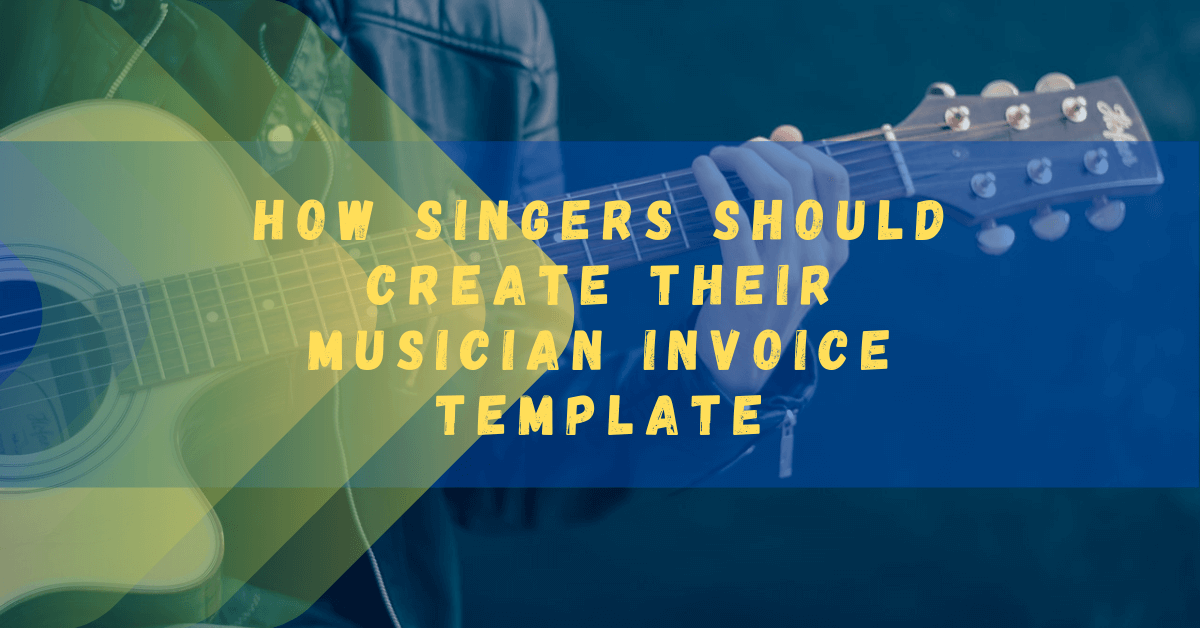Are you in the music industry? If so, then you are aware of just how bustling this industry could be. Whether you’re a recording artist, producer, or music teacher, you play a crucial role in filling the world with music. But while these jobs are different from each other, one common ground between a performer and a person behind the scenes is that each profession needs to be paid.
If you make or help create good music, you’re bound to get paid for it. After all, it’s still business at the end of the day. That’s why invoicing also plays a huge role in this field. Fortunately, you can do that using a musician invoice. This invoice template is used specifically by people within the music industry to ensure that they get their payment after a gig, session, concert, or any other event that you may organize or attend.
Table of Contents
ToggleWhat is a Musician Invoice Template Used for?
Professional musicians and other people in the music industry use this type of invoice to bill their clients and venues for their creative services and performance. Like other types of invoices, a musician invoice features an itemized list of all the services you provided, some details of the musician’s rate, the total amount due, and the payment deadline.
Invoices can also help musicians and even recording companies improve their business accounting procedures. At the same time, it also gives insights and details on their expenses, revenue, and overall business growth.
Types of Music Careers Where Musician Invoice Template Can be Used for
A musician invoice serves as the official invoice for people in the music industry. It serves different types of professional musicians and other music careers. Here are some examples of professions and musical entities that benefit from this type of invoice:
Musicians
Whether you’re a solo recording artist or an instrument player, a musician invoice is an ideal option for billing your clients for all the hard work that you do. From live performances to recording and studio work, a musician invoice template is all you need to capture all the details you need to show your employer, recording company, or client to get paid.
Band
Whether you’re playing in live gigs, on television, or the radio, you know your band always delivers a breathtaking performance. That’s why you and your bandmates deserve to get paid. So, make sure your invoice is just as amazing as your commitment and dedication to your craft. That way, you will get paid. Also, make sure you use a musician invoice to make your billing more professional and credible.
Music Producers
In every artist’s success, a music producer works tirelessly and believes that their talent will finally earn them a big break. When artists are looking to you to make their image and music go viral, it’s important that you keep your finances stable and flowing by using a musician invoice. You can modify this invoice for all of your clients so you can guarantee that you’ll get paid no matter the situation.
Tour or Road Performance
Did you land an amazing cross-country tour with your crew or band? Make sure the money will keep flowing even while you’re on the road and performing in different locations around the country and abroad. Use a musician invoice to list all of your hotel, travel expenses, and rider equipment. That way, you will get paid for all of your work and even get reimbursement from your recording company.
Merchandise
Are you starting to sell merch like t-shirts, records, and other goodies to squeeze in some extra income? Whatever extra items that you’re selling, you can still use a musician invoice to bill your fans whenever they purchase your merchandise. Since it’s customizable, you can change your invoice depending on the items you’ve sold.
Invoice Types for Musicians
Musicians and other professionals in the music industry can use different types of musician invoices to bill for their performance and services. Some of the most common types include the following:
Standard Musician Invoice
A standard musician invoice provides all of the details and information that you need for billing your clients. This invoice includes a list of all your services, the total amount due, and the payment deadline. It also includes notes and short descriptions of each item on the list.
Prepayment Invoice
If you need money before you perform, you can send a prepayment invoice so that your client will pay – either partial or in full – in advance. This type of invoice is useful if you are unsure of the client you are working with. If you’re skeptical about their potential to pay you, request a prepayment invoice to give you some assurance that they have the funds to pay you.
Recurring Invoice
If you’re playing at the same venue regularly, you can send a recurring invoice to make sure you get paid either weekly or monthly. Plus, a recurring invoice will also save you time since you’re generating your invoices ahead of time so that you will get paid on time. You can also automate your recurring invoice using an invoicing application so that you won’t even have to worry about creating and sending your invoice to your client.
How to Create a New Recurring Invoice Using ReliaBills
Creating a New Recurring Invoice using ReliaBills involves the following steps:
Step 1: Login to ReliaBills
- Access your ReliaBills Account using your login credentials. If you don’t have an account, sign up here.
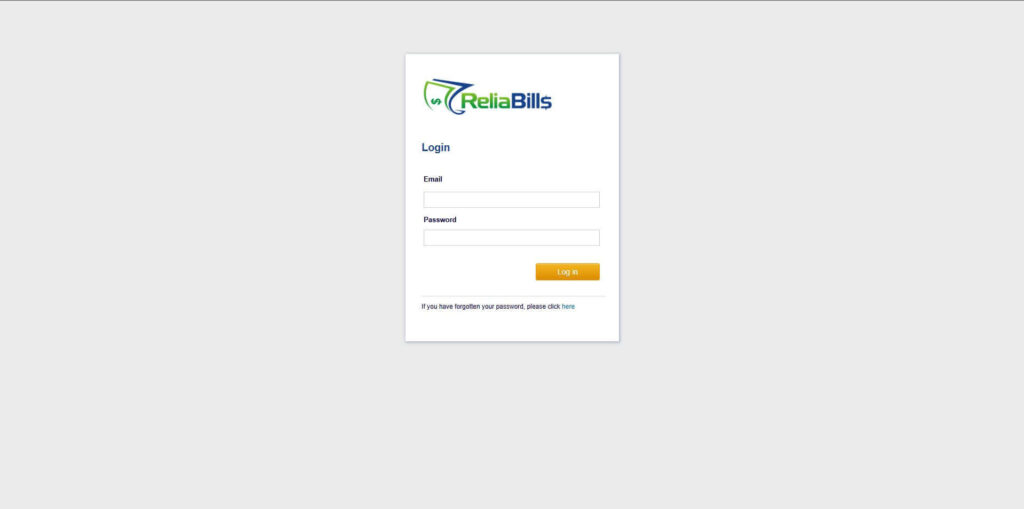
Step 2: Click on Recurring Invoices
- Navigate to the Invoices Dropdown and click on Recurring Invoices for an overview of the list of your existing customers.
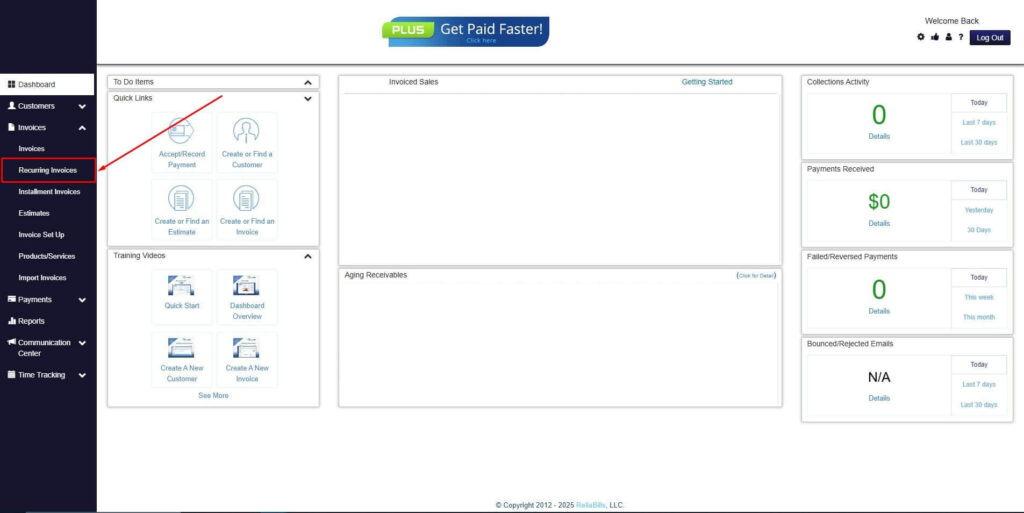
Step 3: Go to the Customers Tab
- If you have already created a customer, search for them in the Customers tab and make sure their status is “Active”.
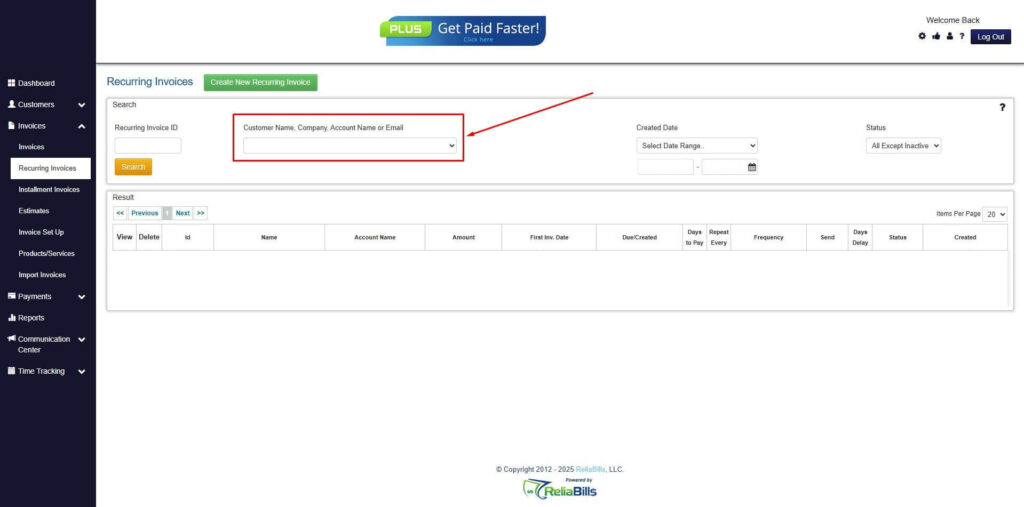
Step 4: Click the Create New Recurring Invoice
- If you haven’t created any customers yet, click the Create New Recurring Invoice to create a new customer.
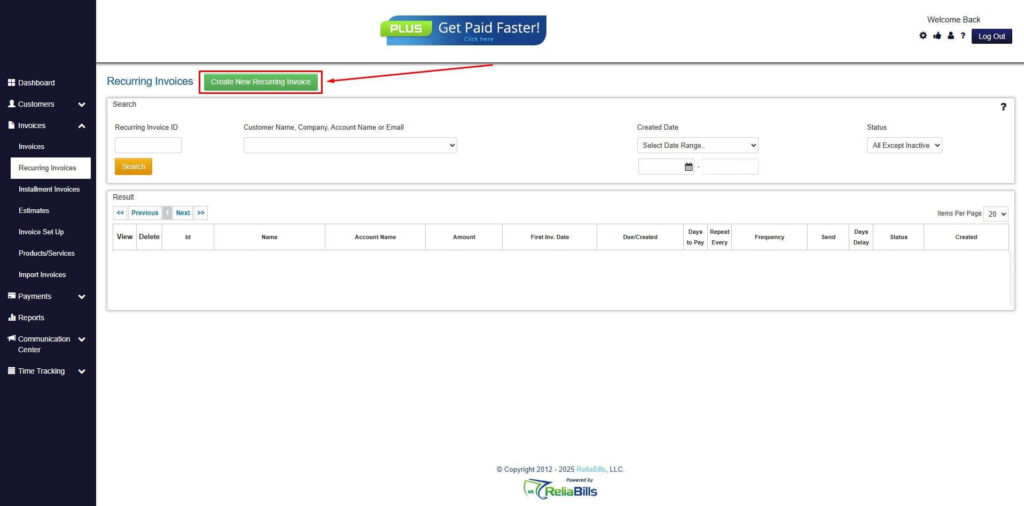
Step 5: Click on the “Click here” Button
- Click on the “Click here” button to proceed with the recurring invoice creation.
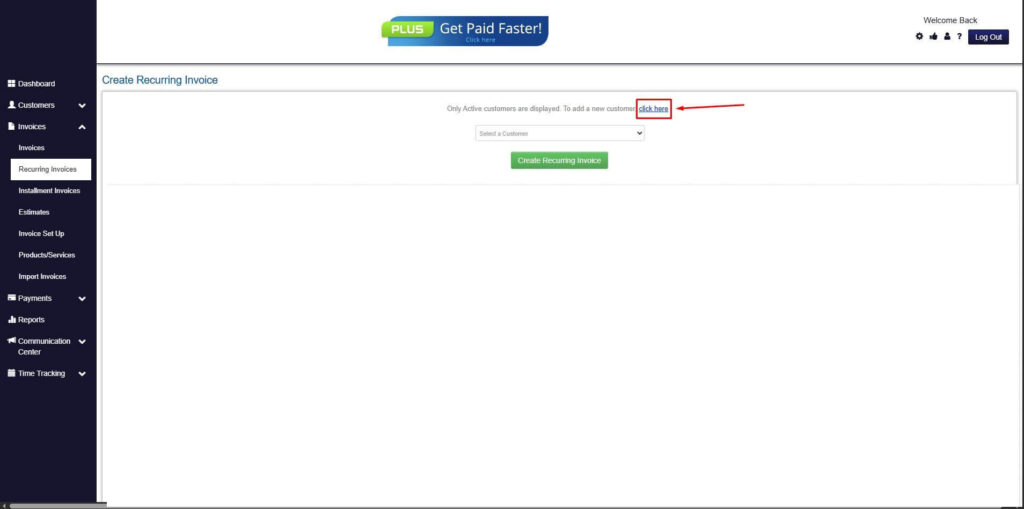
Step 6: Create Customer
- Provide your First Name, Last Name, and Email to proceed.
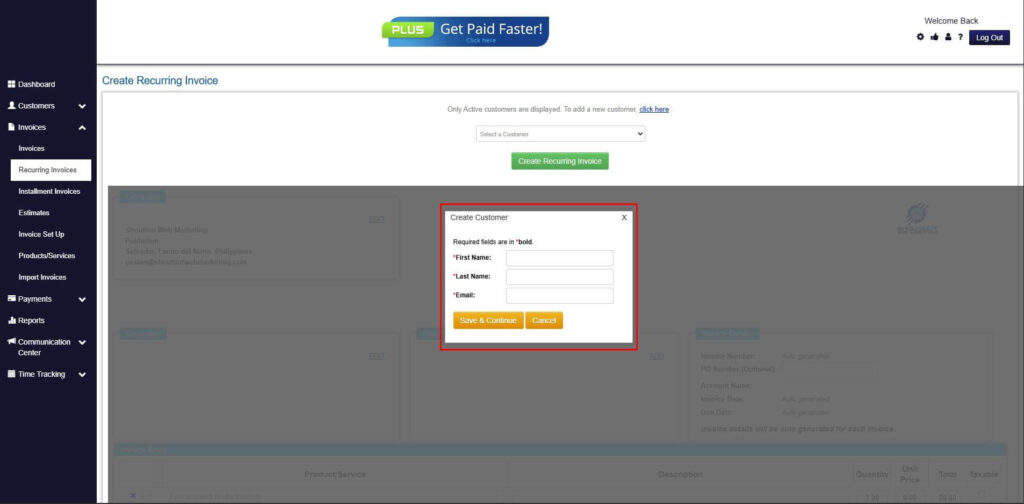
Step 7: Fill in the Create Recurring Invoice Form
- Fill in all the necessary fields.
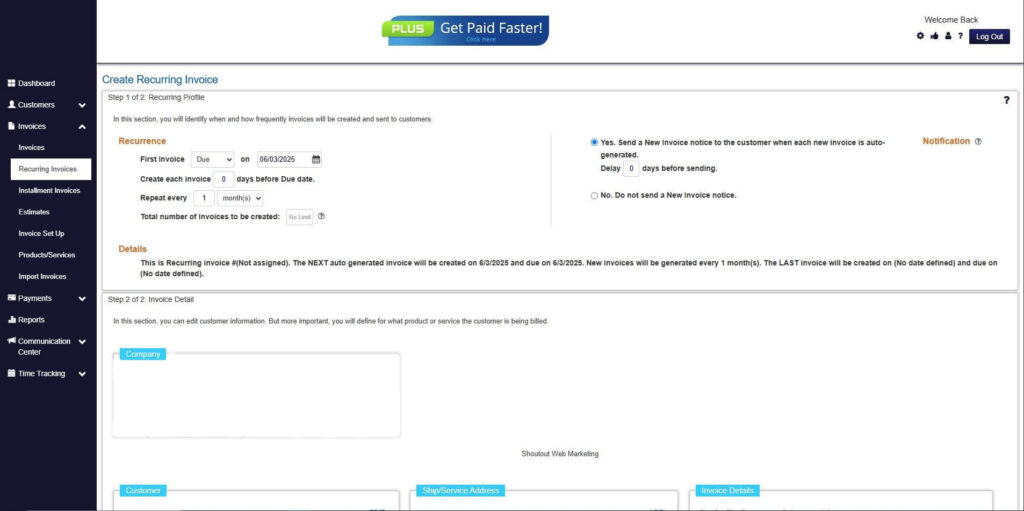
Step 8: Save Recurring Invoice
- After filling up the form, click “Save Recurring Invoice” to continue.
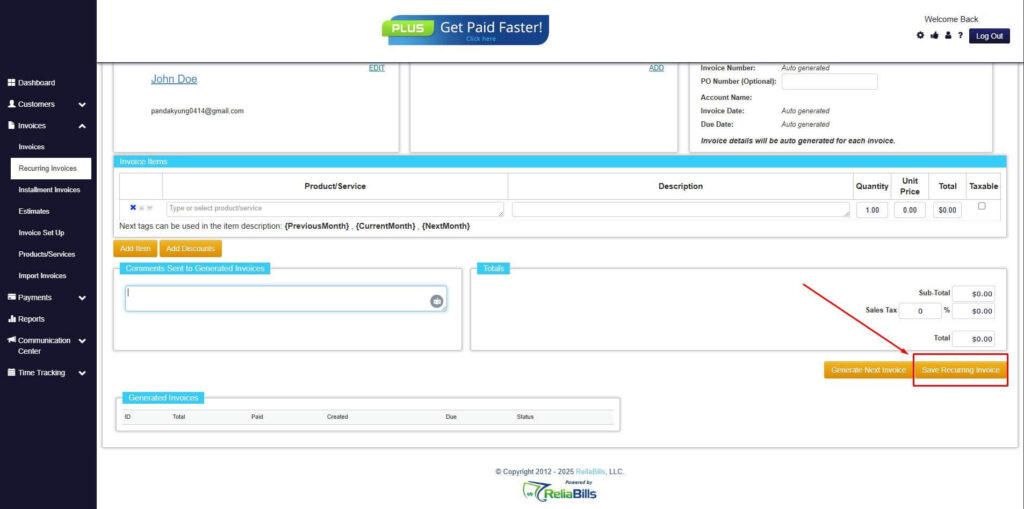
Step 9: Recurring Invoice Created
- Your Recurring Invoice has been created.
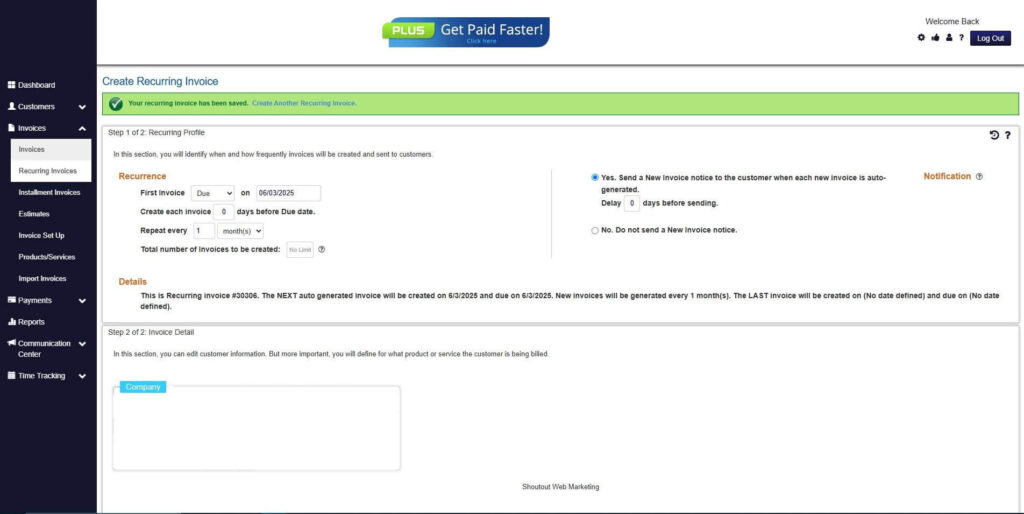
Wrapping Up
There you have it – a quick and simple guide to creating a musician invoice. Remember that whatever invoice you create, the important factors are always accuracy and timeliness. Send your invoice on time and make sure that it contains the right information. That way, you will get paid quicker and on time.

